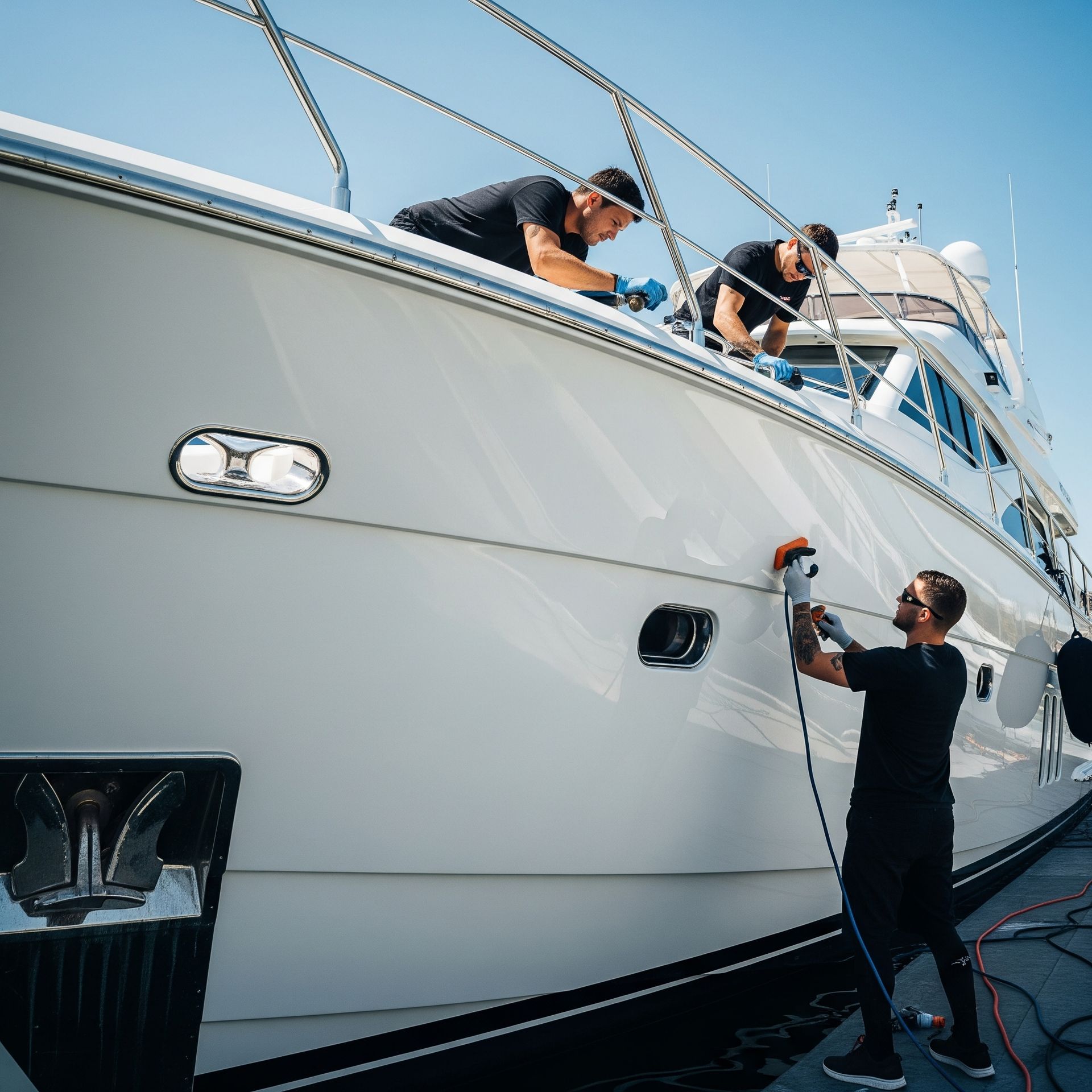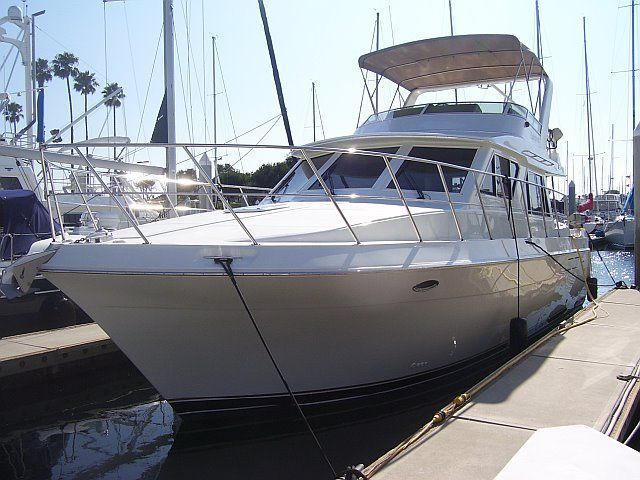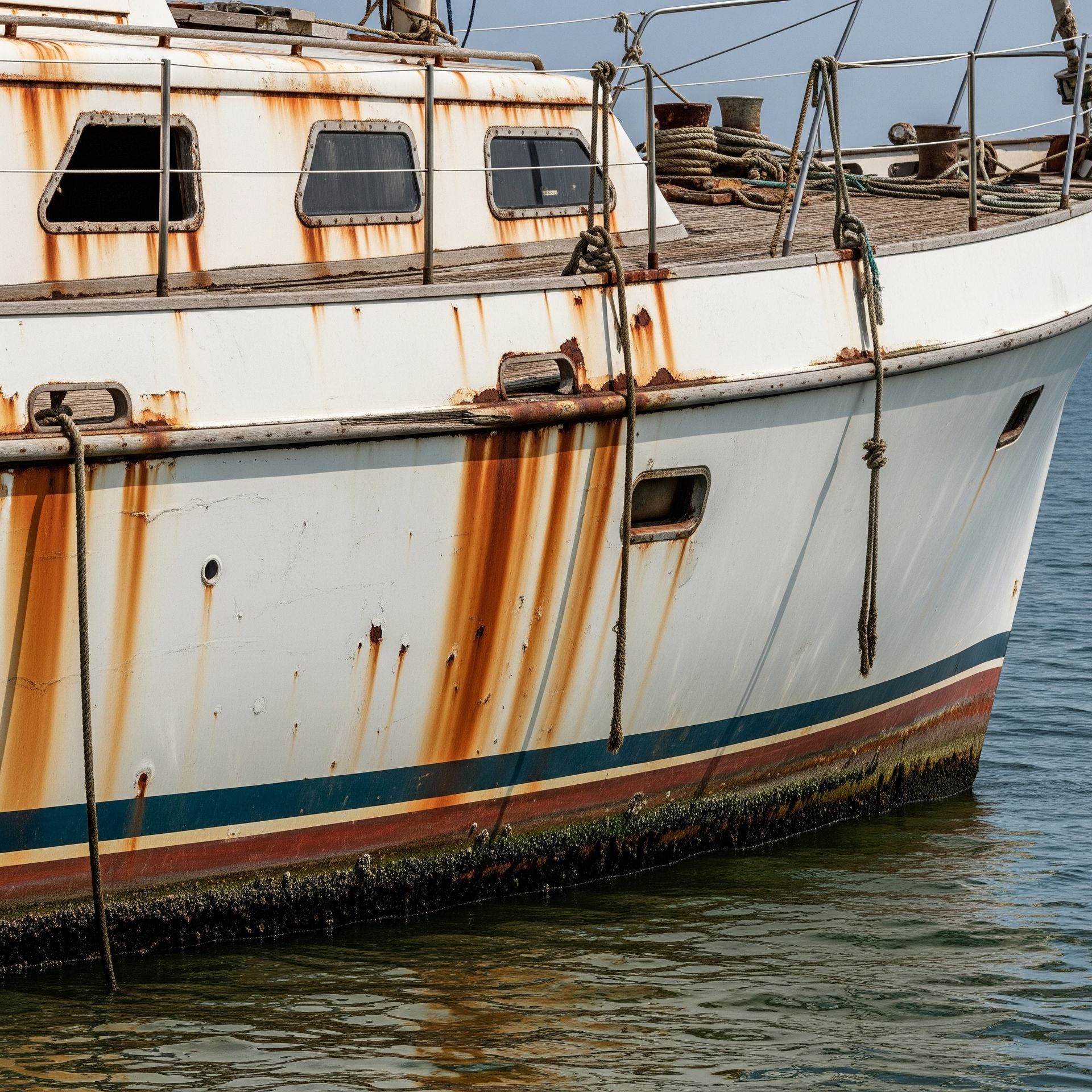How Often Should You Wax Your Boat in Southern California?
Living in Southern California means your boat faces sun, salt, and sneaky weather all year, so waxing twice a year for fishing boats and every three to four months for sailboats helps keep that shine and defense strong.
Even if your boat’s docked, don’t slack off—regular wax prevents cracks and fading. Using marine-grade wax with UV protection works wonders. Want to keep your boat looking sharp and learn the best waxing tricks? There’s plenty more to discover ahead.
Key Takeaways
- Fishing boats in Southern California should be waxed at least twice a year due to frequent salt spray exposure.
- Sailboats require waxing every three to four months to maintain optimal protection and appearance.
- Boats docked or covered can extend waxing intervals but still benefit from regular maintenance.
- Regular waxing protects against UV damage, salt corrosion, and temperature-related surface cracking.
- Seasonal waxing, especially in summer and winter, enhances the boat’s longevity and finish quality.
Understanding the Impact of Southern California’s Climate on Boat Waxing
Since Southern California’s weather is pretty mild and sunny most of the year, you might think your boat doesn’t need much waxing—but that’s not quite true.
Even with that nice weather, your boat faces some sneaky challenges. Temperature fluctuations might seem small, but they can cause your boat’s surface to expand and contract, leading to tiny cracks where dirt and moisture sneak in.
Plus, salt exposure from the ocean is a real troublemaker. Salt isn’t just salty—it’s corrosive and can wear down your boat’s finish faster than you’d guess.
Wax acts like a shield, helping protect your boat from these daily battles. So, even if you’re part of the SoCal boating crew and love those sunny days, giving your boat a regular wax isn’t just about looks—it’s about keeping your pride and joy safe and shiny.
Trust me, your boat will thank you for the extra care!
Signs Your Boat Needs a Fresh Wax
A few clear signs can tell you when your boat is begging for a fresh wax. When you notice wax deterioration signs, like a dull surface or water no longer beading up, it’s time to get busy.
Paint oxidation indicators, such as chalky patches or faded spots, also shout for attention. Keeping an eye out for these is like giving your boat a little love note—it deserves to shine bright among your boating buddies.
Here’s a quick table to help you spot when your boat’s ready for a wax refresh:
| Sign | What It Means |
|---|---|
| Dull finish | Wax layer has worn off |
| Water doesn’t bead | Protection is compromised |
| Chalky or faded patches | Paint oxidation is setting in |
| Scratches more visible | Wax barrier is thin or gone |
| Surface feels rough or gritty | Dirt and oxidation have settled in |
Spotting these signs early keeps your boat looking fresh and ready for the next adventure.
Recommended Waxing Frequency for Different Types of Boats
While the basics of waxing apply to all boats, how often you should wax yours really depends on what kind you have and how you use it.
For fishing boats, which often face salt spray and sun all day, aim to wax at least twice a year. This keeps that tough exterior ready for your next big catch and protects against the wear and tear of salty water.
Sailboats, on the other hand, need a bit more attention due to constant exposure to wind and water. Regular sailboats maintenance usually calls for waxing every three to four months to keep the gel coat shiny and durable.
If your boat spends more time docked or under cover, you can stretch these intervals a bit. But remember, staying on top of waxing isn’t just about looks—it’s about keeping your boat in the club of well-cared-for vessels, ready for smooth sailing whenever you are. In addition to waxing, you should also plan for a regular boat or yacht detailing service to keep your vessel in top shape, in and out.
Choosing the Right Wax for Southern California Waters
Picking the right wax for your boat in Southern California can make a huge difference, especially with all that strong sun beating down.
You’ll want a marine-grade wax that’s tough enough to protect against UV rays and saltwater damage.
Trust us when we say —your boat will thank you by staying shiny and smooth for longer trips out on the water.
Marine-Grade Wax Benefits
Since Southern California waters can be tough on your boat’s finish, choosing the right marine-grade wax really pays off.
You’ll notice the difference when you pick a wax designed for the salty, sun-soaked environment here. These waxes come in different marine wax types, each suited to specific application techniques, making your job easier and your boat happier.
Using marine-grade wax helps you:
- Keep that glossy shine that turns heads at the marina
- Protect against salt buildup and water spots
- Make cleaning a breeze after a day on the waves
- Extend the life of your boat’s paint and gel coat
Trust me, once you find the right wax, waxing and exterior yacht cleaning becomes less of a chore and more of a proud ritual you’ll actually look forward to.
UV Protection Importance
Because Southern California’s sun is pretty relentless, you’ll want a wax that does more than just shine—it needs to shield your boat from harmful UV rays too.
UV damage isn’t just about fading colors; it can weaken your boat’s surface over time, leading to cracks and dullness. Choosing a wax with strong UV protection helps keep your boat looking fresh and sturdy, season after season.
Plus, good UV-blocking wax boosts wax longevity, so you won’t have to reapply as often—saving you time and elbow grease. Think of it as sunscreen for your boat, giving it that extra layer of defense against the blazing sun.
When you pick the right wax, your boat stays part of your crew, ready for every Southern California adventure.
Seasonal Waxing Tips to Protect Your Boat Year-Round
You’ll want to adjust your waxing routine with the seasons to keep your boat looking sharp all year.
In winter, waxing helps protect against moisture, while spring is perfect for prepping your hull for sunny days ahead.
Come summer, a good wax shields your boat from those strong UV rays, so it doesn’t end up looking like a raisin!
Winter Waxing Benefits
Even though winter might seem like a quiet time for boating, it’s actually one of the best seasons to give your boat a good wax.
Those winter benefits are real—wax protection during colder months shields your boat from moisture, salt, and grime that sneak in when you least expect it.
Think of waxing as wrapping your boat in a cozy, protective blanket.
When you wax in winter, you:
- Keep the gel coat shiny despite damp, chilly air
- Prevent salt buildup from ocean breezes
- Stop dirt and debris from sticking around
- Make spring cleanup way easier (your future self will thank you!)
Staying on top of winter waxing means you’re part of a community that truly cares about their boats—and it shows every time you hit the water.
Spring Prep Techniques
Since spring brings fresh adventures on the water, it’s the perfect time to give your boat some extra TLC with seasonal waxing.
Think of it as part of your spring cleaning routine, but for your boat. Start by giving your hull a good wash to remove winter grime and salt buildup.
Next, inspect for any scratches or dull spots, because boat preparation means catching issues early before they worsen.
Applying a fresh coat of wax not only restores shine but also adds a protective layer against upcoming spring rains and mild sun exposure.
Waxing now gets your boat ready to shine all season, making every outing feel special.
Trust me, your boat—and your boating buddies—will appreciate the extra effort.
Summer UV Protection
Now that your boat is sparkling clean and ready for spring, it’s time to think about summer’s blazing sun.
The intense summer sun can wear down your boat’s finish faster than you’d like, so keeping that wax layer fresh is key to prolonging wax longevity.
Think of waxing as sunscreen for your boat—it shields it from UV damage and keeps it looking sharp.
To protect your pride and joy this summer, try these tips:
- Wax your boat every 6 to 8 weeks during peak sun exposure
- Use a wax with UV inhibitors for extra defense
- Park in shaded areas or use a cover when docked
- Rinse off salt and grime regularly to prevent buildup
Stick with these, and your boat will thank you all summer long!
How to Properly Wax Your Boat: Step-by-Step Guide
Waxing your boat might sound like a big job, but if you break it down into easy steps, you’ll see it’s pretty doable. First, you’ll want to start by choosing wax types that suit your boat’s finish—think marine-specific waxes that protect against salt and sun. Next, prep your boat’s surface by washing and drying it well.
When it comes to wax application techniques, use a soft cloth or applicator pad, applying wax in small, circular motions. Let it haze, then buff it off with a clean microfiber towel.
Here’s a quick cheat sheet:
| Step | What to Dome | Pro Tip |
|---|---|---|
| Choose Wax | Pick marine-friendly wax | Look for UV protection |
| Prep Surface | Wash and dry thoroughly | Avoid waxing in direct sun |
| Apply Wax | Use circular motions | Work in small sections |
| Buff Finish | Wipe off haze with towel | Use microfiber for shine |
Stick with these steps, and you’ll join the club of proud boat owners who keep their vessels gleaming!
Maintenance Practices to Extend the Life of Your Boat’s Wax Finish
Keeping your boat’s wax finish looking fresh doesn’t stop once you’ve buffed it to a shine. To keep that glossy look lasting longer, you’ve got to stick to a solid maintenance schedule and use smart waxing techniques.
Think of it like caring for your favorite sneakers—you wouldn’t just clean them once and forget, right? Here’s how you keep your boat’s wax in top shape:
- Rinse your boat with fresh water after each outing to wash off salt and grime.
- Use a mild soap and soft cloth for regular gentle cleanings, avoiding harsh chemicals.
- Apply a quick detailer spray between waxings to boost shine and protection.
- Park your boat under cover or use a quality boat cover to shield it from sun and weather.
Frequently Asked Questions
Can Waxing Improve My Boat’S Fuel Efficiency?
You’ll love the waxing benefits—it reduces hull drag, boosting your boat’s fuel efficiency. By keeping your boat’s surface smooth, you save fuel and join others who care about performance and protecting their investment on the water.
Is It Necessary to Wax My Boat Trailer as Well?
Think of your boat trailer as your vessel’s trusty sidekick—wax application shields it from rust and wear, boosting trailer maintenance. You’ll feel part of a savvy crew keeping every journey smooth and protected.
How Does Waxing Affect the Resale Value of My Boat?
Waxing your boat boosts its resale value by preserving its finish and preventing damage. When you keep up with boat maintenance like waxing, you show pride in ownership, making your boat more appealing to potential buyers in your community.
Can I Wax Over Old, Chipped Wax Without Stripping It First?
You shouldn't wax over chipped wax without proper surface preparation. Skipping stripping leads to uneven layers and poor adhesion. Take time to remove old, damaged wax so your boat’s finish stays smooth and protected—your boating crew will thank you!
Are There Eco-Friendly Wax Options Suitable for Southern California?
You’ll find eco-friendly options designed for marine sustainability that protect your boat and the ocean. Choosing these waxes helps you join a community committed to preserving Southern California’s waters while keeping your boat shining beautifully.
Final Thoughts
Just like the Southern California sun loves to shine, your boat loves a good wax to keep it gleaming. Waxing every few months, or whenever you spot dull spots, keeps your boat happy and protected.
Think of it like sunscreen—skip it, and things start to fade. With the right wax and a little regular TLC, your boat will look sharp and ready for those sunny adventures, no matter the season. Easy, right?
If you're unsure about how to properly wax your boat or you prefer the assistance of professional yacht detailers, just
give us a call. Wherever you are in Southern California, our
expert boat detailing service has got you covered.
Share this article











